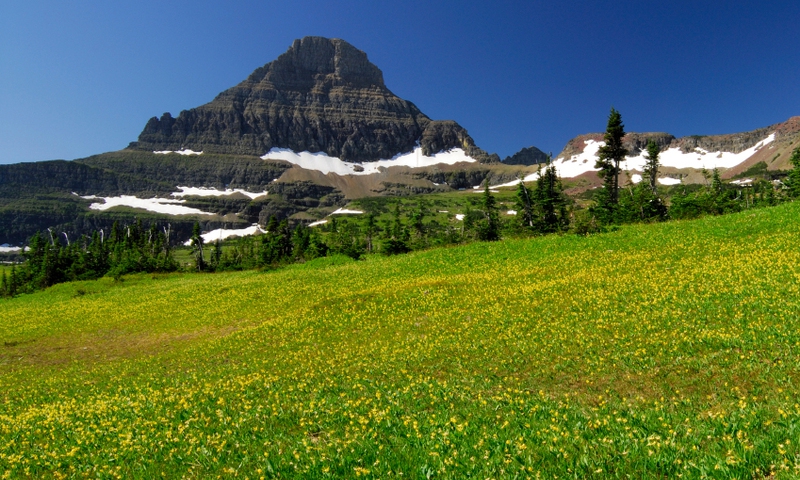The abundance of wildlife, wildflowers, and incredible views fill any visitor to Glacier with serenity. You will most likely see a few bighorn sheep, elk, mule and whitetail deer, black bear, bald eagles, marmots and mountain goats. Beavers, bison, moose, wolves, and grizzlies may see you more often than you see them, but they too call Glacier National Park home. The wildflowers glow along mountain sides in the summer. Wildflowers like heather, lupine, glacier lily, aster, and Indian paintbrush make a hike or stroll through Glacier's backcountry seem like you are walking through a watercolor painting.
But don't let the tranquility of the park hide its ongoing movement and action. Thousands of years ago glaciers filled the park, covering all the canyons, cliffs, rivers, flowers, mountain sides, and many peaks. Glaciers act like rivers of old ice, continuously carving and eroding the rock that sits below them. Features like hanging valleys, cirques, aretes, moraines, and horns can be seen today as evidence that a glacier once rolled over top of it. Today, 50 glaciers still remain in the park. These glaciers are shrinking but still shape the rock around and under them, although on a smaller scale than many years ago.
Over 730 miles of maintained trails invite hikers, backpackers, cross-country skiers, and many more. Watch out for snow and winter conditions until mid-June, and in higher elevations until late July. Over 200 lakes and streams lure the eager anglers. The visitor centers are open from late May to mid-September but feel free to enjoy the park year round.
The drive from Cody, Wyoming to Glacier National Park is about 10 hours. Follow WY-120 north to MT-72 to US-310 to I-90 west to US-191 to US-87 to I-15 north. Take Exit 363 and follow US-2 which turns into US-89 and reaches the Going-to-the-Sun road at Glacier National Park. Once there you will have endless opportunities to experience the amazing geology, diverse wildlife, and adventure in the out-of-doors. After you visit Glacier National Park, it will be easy to understand why Native American Indians, who once inhabited much of the area, still consider this place sacred.









